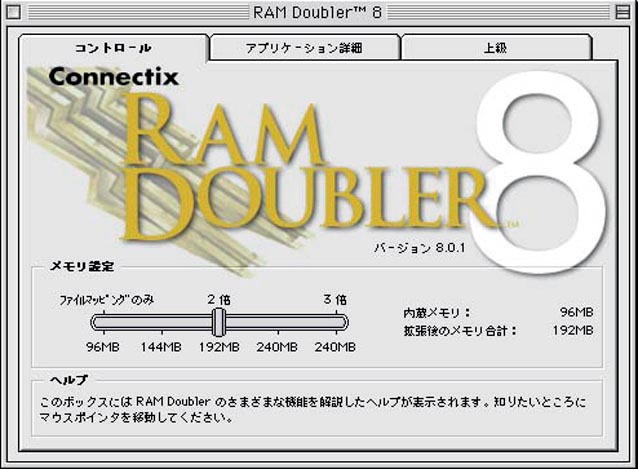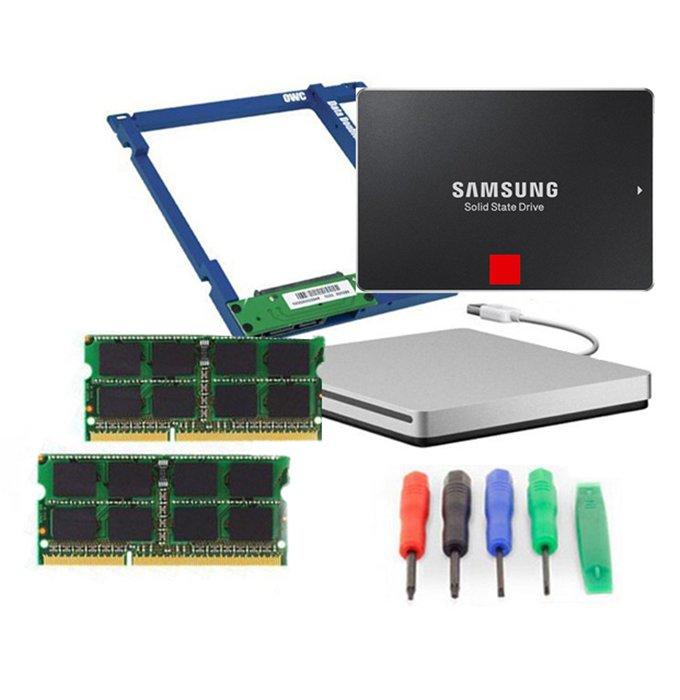It happens to every Mac (and every other kind of PC): The system slows down when it’s doing lot of things at once. If this happens to your Mac more than you’d like, though, your system might need more RAM. Adding more RAM to your Mac—if you can add more RAM—is one of the eaiest ways to improve your Mac’s performance.
The crucial question is, How much more RAM do you actually need? Macworld Lab ran benchmarks on a couple of Macs at different RAM configurations and analyzed the results. Our conclusion: The impact of more RAM depends on the types of tasks your Mac performs. In some situations your Mac may benefit from having as much RAM as you can afford; in others, you’ll be fine with the stock configuration.
But before we dive into the results, let’s take a brief look at what RAM is and why it’s important to your Mac. (This article focuses exclusively on the impact of RAM on system performance, but of course RAM isn’t the only component that affects performance. Macworld Lab is currently working on tests that will allow us to take a similar look at how other components—storage, graphics, and CPU—affect performance.) What is RAM? Random Access Memory is a temporary storage medium that your Mac’s CPU uses for fast access to data it’s processing. The CPU can access data contained in RAM much faster than it can data held on long-term storage devices like traditional hard drives and even solid-state drives. Albert Filice RAM designs vary for different computers and different needs. Suppose that you want to work on a text file.
Your computer will copy the text file—and the necessary information for the text editor you’re using—into RAM. Next, let’s imagine that you open Photoshop, while leaving the text editor open.
802.11n driver. Photoshop also loads data into RAM; so at this point, your Mac will have two apps loaded into RAM. The more apps you open without closing down other ones, the less available RAM will remain available to accommodate other apps and perform other functions.
When your RAM is full and another app needs to use some of the space, something’s got to give. In this case, paging will occur: Your Mac’s CPU will move data that isn’t in active use from RAM to a swap file on your storage device (hard drive or SSD), and the new data will go into RAM.
Paging can make a computer that seemed fast a second ago slow to a crawl. The more RAM your system has available, the less your CPU will rely on paging Albert Filice A Retina MacBook Pro with 8GB of RAM—a system that doesn't have user-upgradable RAM.
Can I upgrade my RAM? Apple adopts a locked-down approach toward many of its Macs, including the MacBook Air and the Retina MacBook Pro. On these Macs, RAM is factory-installed directly on the motherboard as onboard memory. As a result, you can’t upgrade the system’s RAM later; on the other hand, this approach allows Apple to make laptops slimmer and more portable. In Apple’s current computer lineup, the Mac Pro, the 27-inch iMac, the Mac mini, and the non-Retina MacBook Pro have user-upgradable RAM., and offer online tools designed to tell you whether your RAM is user-upgradable, and to help you find the correct RAM for an upgrade.
NewEgg has a. OWC offers an. Albert Filice The RAM modules on this 2010 MacBook Air are soldered to the motherboard and thus are not user-upgradable. Benchmarks: The effects of RAM The more RAM a Mac has, the better it performs—but how much improvement will you see? To find out, we ran tests, including our benchmarking suite, on two computers equipped with three levels of RAM: 4GB, 8GB, and 16GB. The first system we tested was a mid-2011 iMac with a 3.1GHz Core i5 processor and a 1TB hard drive.

The second was a late-2011 MacBook Pro with a 2.4GHz Core i7 processor and a 750GB hard drive. Both systems carried standard congifurations and originally came with 4GB of RAM. Photoshop CS6 actions test 100MB file. 4GB 141.3 seconds. 8GB 98.7 seconds. 16GB 98.0 seconds 250MB file. 4GB 265.0 seconds.
8GB 130.3 seconds. 16GB 122.7 seconds 500MB file. 4GB 795.6 seconds. 8GB 330.3 seconds. 16GB 178.0 seconds Results are in seconds. Smaller results/shorter bars are better. Our Photoshop test consists of performing a series of actions on a file.

As the test results show, the effect of additional RAM on performance depends on the file sizes you typically work with. It’s possible to see a diminishing return or a huge benefit from extra RAM. Photoshop is a perfect example of an app that can take advantage of having a large amount of RAM available. It even lets you specify a maximum allowable amount of RAM for the app to use. Otherwise, Photoshop might eat your entire RAM pie, leaving just the crumbs for your other applications.
Ram Doubler For Windows 10
Albert Filice Adjust your settings to prevent Photoshop from hogging all of your system's RAM. VMware-PCMark on Windows 7.
4GB 1260. 8GB 3456. 16GB 3657 Results are scores. Larger results/longer bars are better. We ran Windows 7 using VMware with a relatively light set of tests. Virtual machines can require a lot of RAM, but not always.

We didn’t see any substantial improvement when allocating more than 4GB to the virtual machine; however, your experience may be different if you have a lot going on. The same factors that go into deciding how much RAM you need also apply to virtual machines—so if you do heavy lifting in your virtual OS, you’ll need the RAM to back it up. Mathematica. 4GB 1.62. 8GB 1.66. 16GB 1.73 Mathematica results are in points. Longer results (and bars) are better.
Mathematica was the only other test that saw a speed boost of greater than than 5 percent—but the overall increase on this test was only about 6 percent. After doubling the RAM from 4GB to 8GB, we saw a 2.5 percent increase in performance. After quadrupling it from 4GB to 16GB, we saw a 6 percent increase. Elsewhere, not much changed After running our Speedmark test suite with three different RAM configurations, we concluded that maxing out RAM won’t accelerate many computing pursuits. Of our 15 test results, 12 failed to show at least a 5 percent increase in speed when we upgraded our test systems from 4GB to 8GB or 16GB. Below, we list the results for the 12 tests where our systems showed minor or no improvement after we added RAM.
Some test results even seemed to get slightly worse after the RAM upgrades, although this effect is probably due to randomness. Portal 2. 4GB 108.73. 8GB 109.17. 16GB 109.56 Portal 2 results are in frames per second.
Ram Doubler Mac Os X
Larger results/longer bars are better. What’s the ideal amount of RAM? Most new Macs come with either 4GB or 8GB of RAM standard. That’s enough for most Macs destined for general use. In the real world, every Mac setup is different, so if you’re considering adding more RAM, be sure to keep track of your computer’s RAM usage during your normal workflow.
If you tend to leave apps open instead of closing them, or if you keep several browser windows open with dozens of tabs in each, adding RAM will probably help your computer run more smoothly. If you use an app that handles large files, it helps to have a lot of RAM. Albert Filice OS X's Activity Monitor shows that this system is currently using a little more than half of its available RAM. It’s not too hard to figure out the RAM sweet spot for your system and your workflow. If your Mac is running slowly, open Activity Monitor ( Applications Utilities Activity Monitor) and check out the System Memory tab at the bottom of the window. If you’re low or completely out of Free or Inactive RAM and you’re not doing anything unusual (editing a humongous Photoshop file, for example), adding more RAM will probably speed up your performance. Try not to get carried away, though, as adding fistfuls of RAM that your Mac will never or rarely use is throwing money away.
Even if you can think of a few scenarios where you might use all of the RAM that your system can handle, consider how often they are likely to happen and whether buying RAM to handle them is worth your money. Take a bit of time to diagnose your system and get a rough idea of how much memory you’re using now; and think about what you plan to do in the future and how long it will be before you upgrade to a new Mac. Editor's note: Updated 5/13/13 to include the non-Retina MacBook Pro in the list of Macs that have user-upgradeable RAM. Also added Tiger Direct and OWC to the list of online resources for buying RAM.